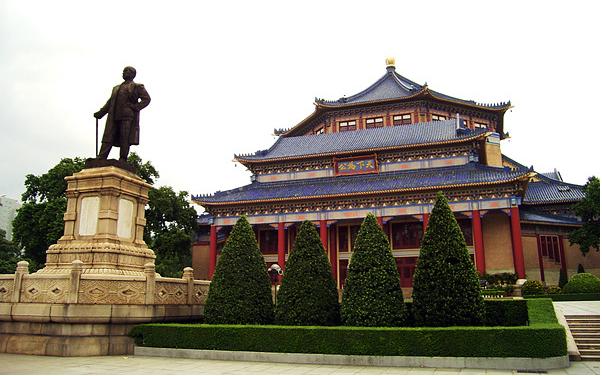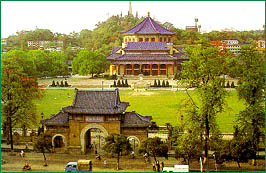Welcome to Guangzhou
A famous cultural city,
A famous tourist city,
South China's biggest national-and-foreign-oriented city
Introduction
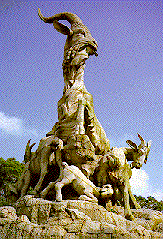 Guangzhou, located at the north of the Pearl River delta, is an important trading center as well as a busy port and the capital city of the province of Guandong. The city has an area of over 16,000 square kilometers and a population of 6.7 million.
Guangzhou, located at the north of the Pearl River delta, is an important trading center as well as a busy port and the capital city of the province of Guandong. The city has an area of over 16,000 square kilometers and a population of 6.7 million.
The climate of Guangzhou is sub-tropical. The average year-round temperature is 22C. August is the hottest month, with an average temperature of 28C. January is the coldest month, with an average of 13C. The rainy season falls between April and August. Average annual rainfall is 1,720 mm.
Like Athens of Greece and Rome of Italy, Guangzhou also has a history of more than 2,800 years. There are a lot of interesting legends concerning its past. One of the beautiful stories which gives the city its name Goat Town says that five gods riding on five goats brought the first grain to the city. So, it is also known as the City of Five Goats.
Guangzhou is also one of the most important centers of foreign commerce in South China. The Chinese Export Commodities Fair has been held twice a year in the city since 1957. It is also a cultural center. There are several universities, the Zhongshan University, the South China University of Technology, the Ji-nan University and so on. There are also higher educational establishments. The city is renowned for its arts and crafts, namely the Guang Dong embroidery, ivory-carving and ceramics.
Guangzhou is a beautiful city with an ever-green scenery and flowers blooming all the year round. The city boasts many tourist attractions, among which highlights are Zhenhai Tower, Bright Filial Piety Temple, Temple of the Six Banyan Trees, Huaisheng (Remember the Sage) Mosque, Sun Yat-sen Memorial Hall. In the Suburbs, there are such scenic spot on Conghua Hot Springs, Xiqiao Hill Scenic spot, Seven Star Crags, and Foshan City. Lots of tourists to Guangzhou like to cover one or two of them for out-of-city pleasure.
"Eating in Guangzhou" has become a popular saying both at home and abroad. Guangzhou ranks first in the number of restaurants and tea-houses in the country. Cantonese cuisine is good in color, fragrance, taste and presentation. In addition, the delicate Cantonese pastry is also well-known for its wide range of varieties, delicious flavor and beautiful color. Cantonese cuisine is among the most famous four in the country.
As for hotel accommodations, there are Garden Hotel, China Hotel, White Swan Hotel, Dongfang Hotel, Nanhu Hotel, the Overseas Mansion, the Overseas Chinese Mansion, the Overseas Hotel and others.
Attraction
Zhenhai Tower
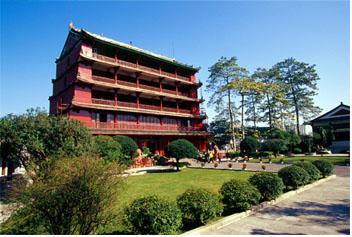
Standing on the top of Yuexiu Hill in the northern suburbs, the 28-metre-high five-storey tower -- also known as Five-storey Pagoda -- was built on the order of Zhu Liangzu, the Yongjia Marquis of the Ming Dynasty (1368-1644), to flaunt his power that was able to "shake the seas and mountains". A magnificent building, it commands a bird's-eye view of the whole city. The tower now houses the City Museum, with exhibits which describe the history of Guangzhou from Neolithic times till the early part of this century.
Bright Filial Piety Temple
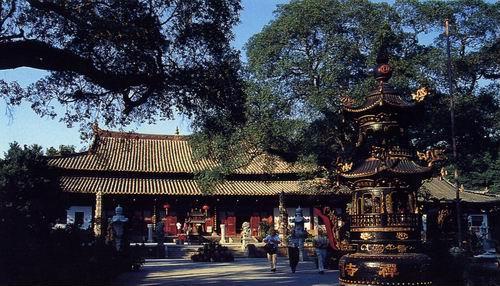 Bright filial Piety Temple is also called Guanghua Temple. Situated in the city proper and first built in the Three Kingdoms period (220-280), the temple is known as the "first ancient temple in South China". The Sixth Ancestor Hall in the temple was built in memory of Huineng, the sixth master of the Chan Sect of Buddhism, who was also the most influential monk in the history of Chinese Buddhism. In the temple there is also a pagoda where Huineng's hair was buried. Other ancient structures in the temple include The Sakyamuni Hall, The Samgharama Hall, The King of Heaven Hall, and two iron towers.
Bright filial Piety Temple is also called Guanghua Temple. Situated in the city proper and first built in the Three Kingdoms period (220-280), the temple is known as the "first ancient temple in South China". The Sixth Ancestor Hall in the temple was built in memory of Huineng, the sixth master of the Chan Sect of Buddhism, who was also the most influential monk in the history of Chinese Buddhism. In the temple there is also a pagoda where Huineng's hair was buried. Other ancient structures in the temple include The Sakyamuni Hall, The Samgharama Hall, The King of Heaven Hall, and two iron towers.

Temple of the Six Banyan Trees
The temple is known as Liu Rong Temple in Chinese. Situated inside the city, the temple, first built in the Five Dynasties period (907-960), was originally called Baozhuangyan Temple. It was renamed in the Ming Dynasty (1368-1644) as Su Shi, a great writer of the Northern Song Dynasty (960-1127), was found to shave written the two characters of Liu Rong when he saw the six ancient banyan trees there on a visit to the temple. In the temple there is a 57-metre-high, 17-story octagonal pagoda, which has on its top a bronze column with 1,000 Buddhist sculptures. The column, with its metal accessories, weighs five tons, something rarely seen in ancient China. The pagoda is also called Flower Pagoda for its colorful exterior. In the temple there are also three large bronze Buddhist sculptures made in the Qing Dynasty (1644-1911), each standing six metres high and weighing 10 tons.
Huaisheng (Remember the Sage) Mosque
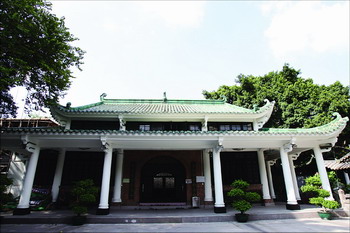
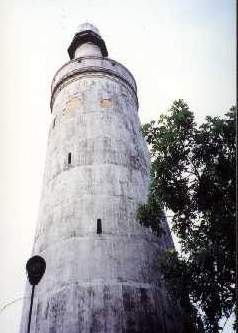
Built in the city during the Tang Dynasty (618-907), the building is one of the oldest mosques in China. The name of the mosque means "Remember the Sage", in memory of the prophet. The 1,000-year-old Guangta, or Smooth Tower, a 36-metre-high brick structure with a smooth surface, is of the Arabic architectural style. In the mosque are the Praying Hall and other buildings.
Sun Yat-sen Memorial Hall
The hall, situated on the southern slope of Yuexiu Hill, is built in memory of Sun Yat-sen, the pioneer of China's bourgeois democratic revolution. The 49-metre-high hall, with a magnificent exterior and elegant interior decorations, can accommodate 6,000 people.
